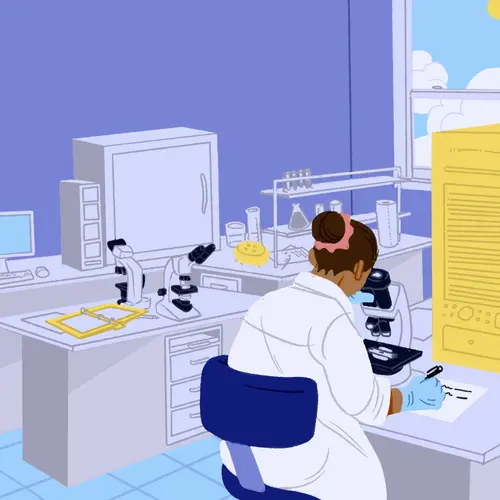If you have ADHD and menstruate, your cycle can have a big impact on your ADHD symptoms. And ADHD medications can also make it more likely that you’ll have premenstrual syndrome (PMS). But there are things you can do to keep these effects to a minimum.
The ADHD and Hormone Connection
It’s unclear exactly what causes ADHD. But doctors believe it’s linked to problems with how your body processes certain brain chemicals called neurotransmitters, mainly dopamine and norepinephrine.
You may be getting medical treatment with a stimulant. These medications increase the levels of these neurotransmitters, making it easier for nerve cells in your brain to communicate. That can help relieve ADHD symptoms.
The female sex hormone estrogen also increases the amount of dopamine in your brain. Another female hormone, progesterone, acts on dopamine as well, but research doesn’t fully understand yet just what effect it has.
Estrogen levels rise in the first 2 weeks of the menstrual cycle. After ovulation, estrogen levels drop and progesterone levels rise. Both hormones are at their lowest levels in the days right before your period. That may also cause a drop in dopamine.
For some women, that can mean a double whammy of worsening ADHD symptoms and PMS.
How Does Your Period Affect ADHD?
Some women say their ADHD seems worse in the later part of their menstrual cycle. Their symptoms may flare and their medications don’t work as well. One study found that when estrogen levels are low, ADHD symptoms increase, though it didn’t find an explanation for that relationship.
There’s some scientific evidence that stimulants have a greater effect when combined with estrogen. As those levels drop in the days leading up to your period, you may see your symptoms get worse.
Girls and women are more likely to have the form of ADHD called predominantly inattentive, with problems related to focus and concentration rather than behavior and impulse control. You may notice that you:
- Have trouble paying attention
- Can’t stick to a task
- Have trouble with relationships
- Can’t control emotions
- Find it hard to get organized
- Lose or forget things
Depression and anxiety are also more likely to go along with the disorder in girls and women.
Some of these symptoms mirror those of premenstrual syndrome, which can come on when estrogen and progesterone levels drop right before your period. Whether or not they have ADHD, many women have emotional and behavior symptoms including:
- Anxiety
- Crankiness
- Depression
- Sleep problems
- Trouble concentrating
How Does ADHD Medication Affect PMS Symptoms?
The connection between ADHD and the menstrual cycle may also work the other way. The medication you take to control your ADHD symptoms could have an effect on your period.
- Atomoxetine (Strattera) is a nonstimulant medicine called an SNRI. Its side effects can include heavy, irregular, or painful periods. Those may go away after your body has gotten used to it.
- The stimulant medicine dextroamphetamine and amphetamine (Adderall, Mydayis) lists painful menstrual cramps as a possible side effect.
- Methylphenidate (Ritalin) is another stimulant. It might cause heavier menstrual bleeding. Some research has found evidence that methylphenidate use might lead to potential fertility problems. But those studies were done on animals, not people. We need more large studies that look at human data to be sure.
Managing Your Cycle With ADHD
Understanding what’s happening in your body can help you manage when ADHD symptoms spike. Get started by keeping track of how you feel day-to-day for a few months so you can see if there’s a pattern.
Also, talk to your doctor about whether your medication should be adjusted.
There are other adjustments you can do to make life during your cycle a little easier:
Plan ahead with work and other commitments. If you have a project or presentation happening right before your period, try to start working on it early.
Make sure to get enough sleep. This can be a challenge, because PMS can affect your sleep patterns. It may make it hard for you to get to sleep, so you’re tired during the day. Tiredness and low mood could make you sleep more than you usually do (hypersomnia). Practicing good sleep hygiene can help:
- Go to bed and get up at the same time each day.
- Keep electronic devices such as phones and tablets out of your bedroom.
- Stay away from alcohol and heavy meals before bedtime.
Eat right. A balanced diet goes a long way toward making you feel more like yourself, and can lessen some ADHD symptoms too. Be sure to get plenty of fruits and veggies, especially leafy greens. These may help with both issues of inattention related to ADHD and feelings of tiredness that come with PMS.
Get Moving. We need more studies to be sure, but some studies have found that cardio exercise can help ease the emotional and physical symptoms of PMS. Exercise has been shown to help ease ADHD symptoms in kids. There hasn’t been enough research on adults, but early studies do show some promise.
Avoid stress.Stress can make both your PMS and your ADHD symptoms worse. Stress has an especially strong effect on symptoms for those who have the inattentive form of ADHD, which is the type many people who menstruate have. Taking time to practice self-care, such as mindfulness exercises, deep breathing, or yoga can help head off stress so you can function better.

